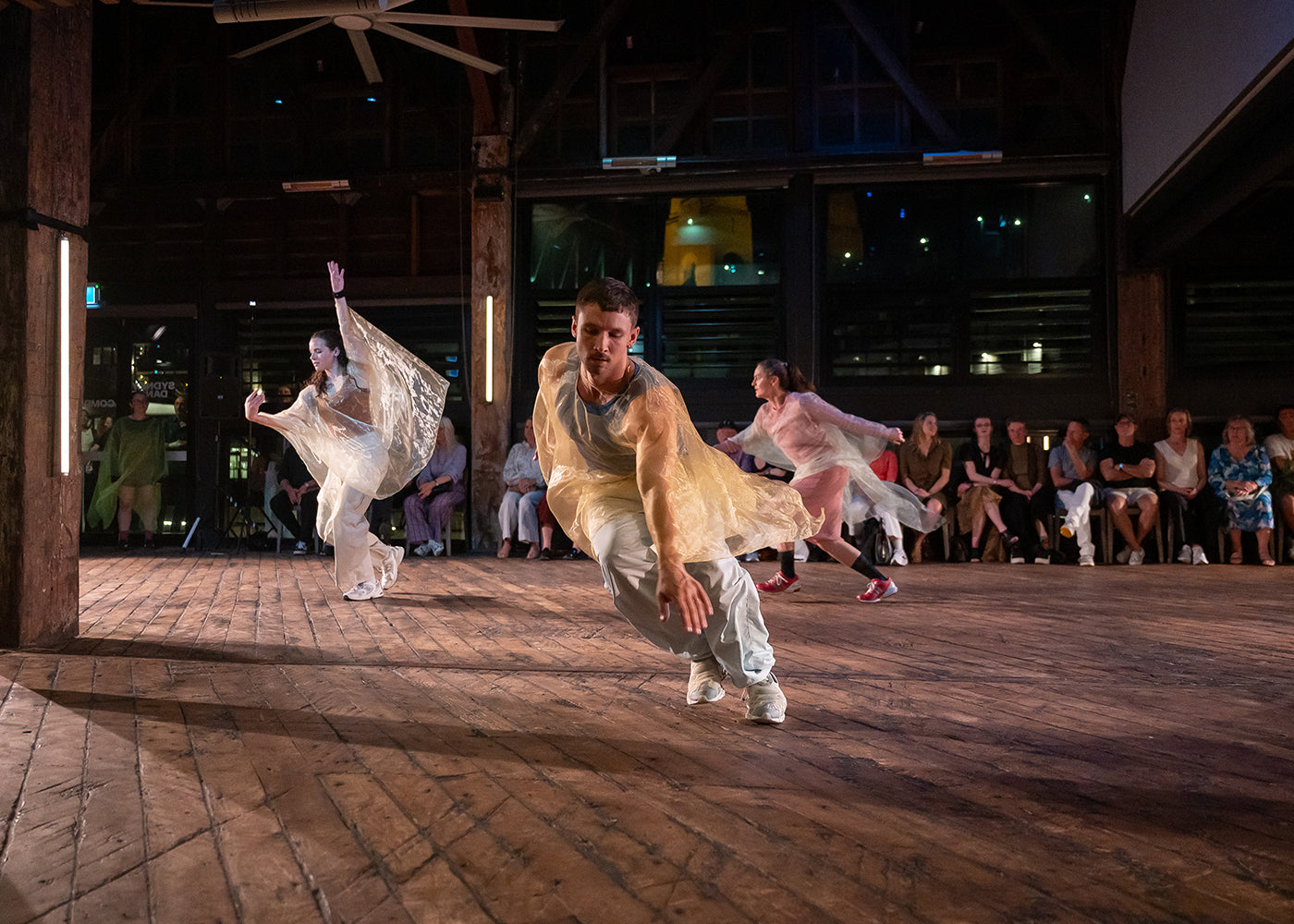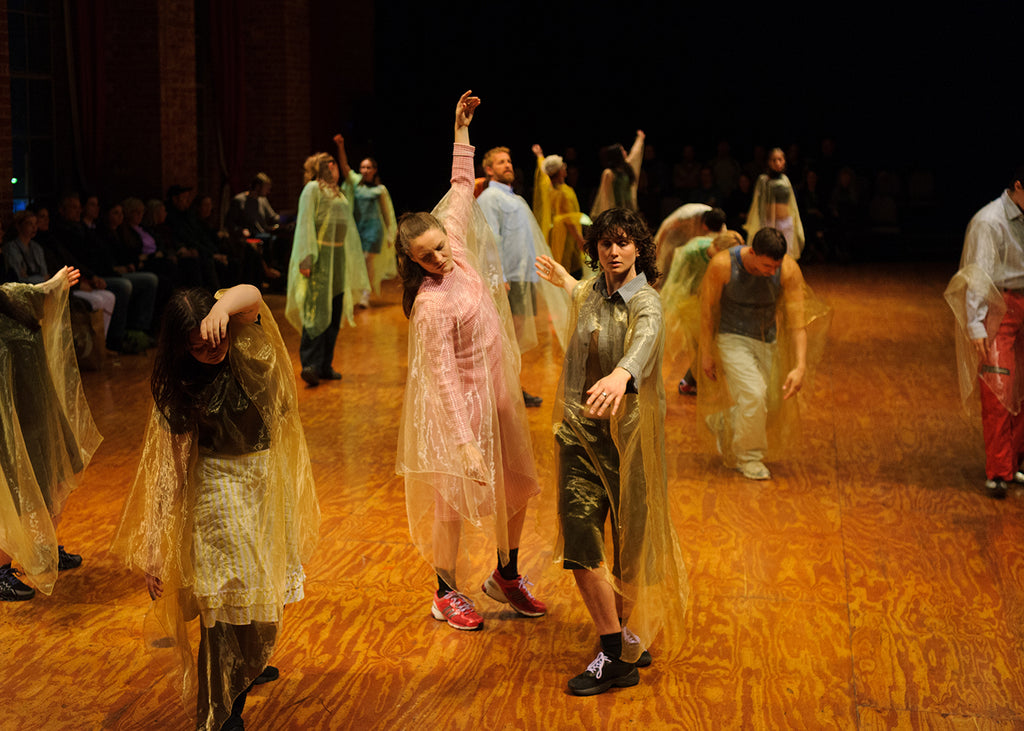Mishima’s Muse
Japan Society’s Yukio Mishima centennial series culminated with “Mishima’s Muse – Noh Theater,” which was actually three programs of traditional noh works that Japanese author Yukio Mishima adapted into modern plays.
Continue Reading
World-class review of ballet and dance.
I make my way up the stairs at the Substation. Along all four sides of the large room, rows of seats are arranged. Event warning: sudden loud noises. Content warning: death. I find a seat along the long side wall, with my back to the window. With the red curtains open and the night sky at my shoulders, I wait. Also sitting and waiting, several of the performers. They are dotted about the room, in pairs, sitting cross-legged on the floor. They are onstage, but not quite yet. They are waiting. Identifiable by the translucent fabric that cloaks their forms, they scan the room. Make eye contact. And set the tone for the celebration, the reason I am here and, I am guessing, others too. To celebrate “dance as a vital language of friendship, community and continual transformation.”[1]
Performance
Place
Words



“Uncommonly intelligent, substantial coverage.”
Your weekly source for world-class dance reviews, interviews, articles, and more.
Already a paid subscriber? Login

Japan Society’s Yukio Mishima centennial series culminated with “Mishima’s Muse – Noh Theater,” which was actually three programs of traditional noh works that Japanese author Yukio Mishima adapted into modern plays.
Continue ReadingThroughout the year, our critics attend hundreds of dance performances, whether onsite, outdoors, or on the proscenium stage, around the world.
Continue ReadingOn December 11th, the Alvin Ailey American Dance Theater presented two premieres and two dances that had premiered just a week prior.
Continue ReadingThe “Contrastes” evening is one of the Paris Opéra Ballet’s increasingly frequent ventures into non-classical choreographic territory.
Continue Reading
comments